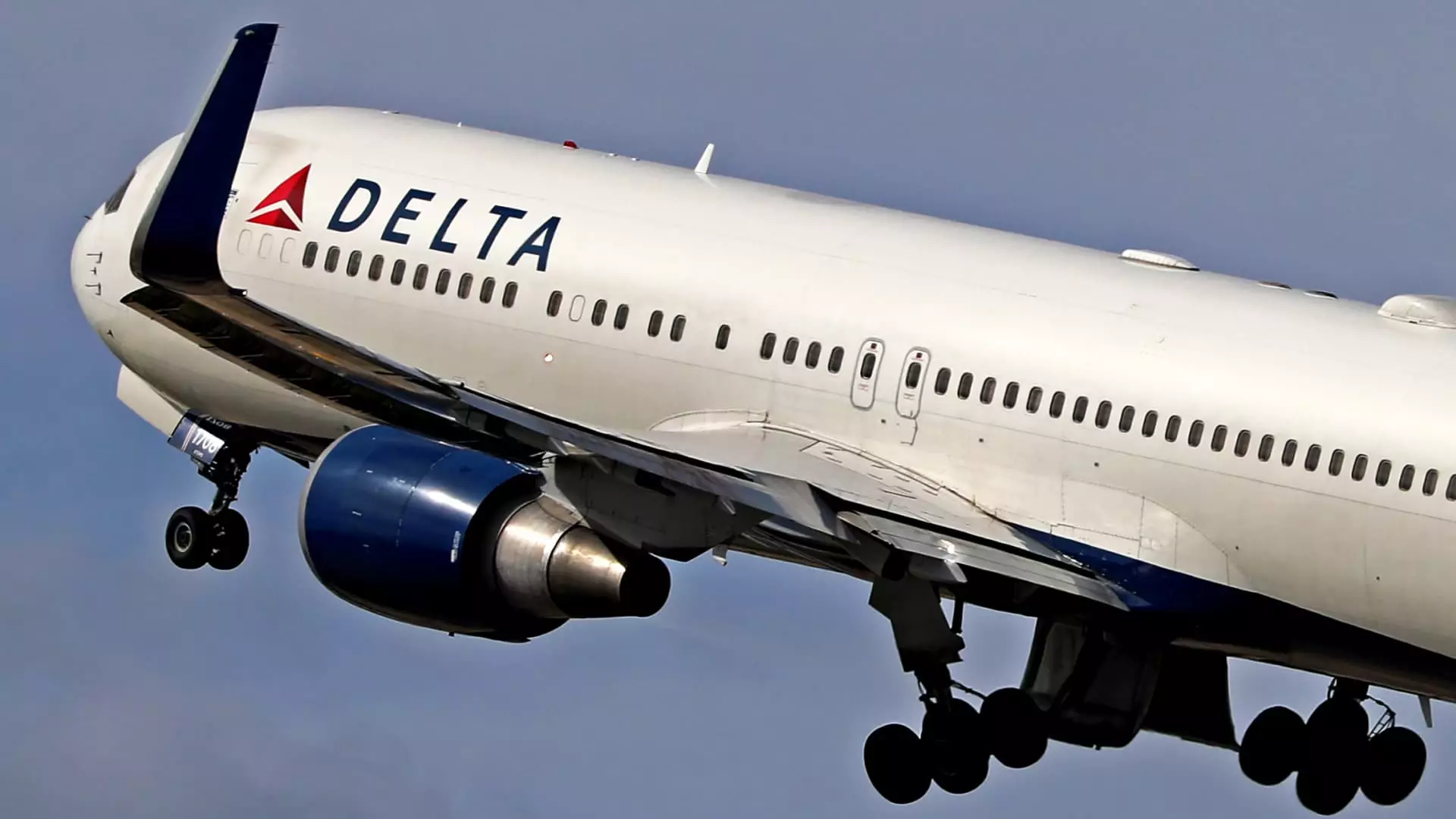The aviation industry, once viewed as a symbol of recovery and growth post-pandemic, now finds itself spiraling into a realm of uncertainty. As the airline stocks plummet, a dark cloud looms over Wall Street, signaling a worrying alignment of economic pressures that threaten the very foundation of air travel. The sharp decline in consumer confidence, coupled with fears about slowing travel demand and potential tariffs, has set the stage for a catastrophic downturn in one of the world’s most essential services.
The New Reality of Airline Economics
Delta Air Lines, which previously shone brightly as the U.S.’s most profitable carrier, witnessed a staggering 2% dip in its stock value recently following a downgrade from Jefferies. The investment bank’s alarming projection—halving the price target to a mere $46—reflects an industry sentiment that is growing increasingly pessimistic. Despite Delta’s ambitious strategy to attract affluent travelers and bolster revenue through its elite services and credit card partnerships, the reality of dwindling masses of price-sensitive passengers looms large. The airline merely finds itself clinging on to the fringes, emphasizing a troubling shift as it attempts to recast itself away from a volume-focused business model.
The Ripple Effects Across the Industry
Others in the sector are being swept into the turbulence as well: American Airlines, Southwest Airlines, and even Air Canada have felt the bite from Jefferies, which raised alarms about their projections amid weakening travel patterns. With American and Southwest experiencing downturns of 2% and 5%, respectively, the ripple effects are starkly evident. The entire ecosystem seems to be unraveling, as weaker travel demand sets off alarm bells throughout the industry, especially for airlines that rely heavily on strong domestic travel, which has historically formed the backbone of their revenue streams.
Consumer Sentiment: The True Flight Risk
Insights gleaned from recent reports underscore that the fading enthusiasm for booking flights is not merely a seasonal fluctuation; it stems from changing consumer behavior amidst economic anxiety. Bank of America’s revelation that airline spending dropped by 7.2% illustrates a seismic shift—consumers are hesitant to book trips as financial uncertainties plague everyday life. Were weather woes and delayed holidays the only culprits, the outlook might seem more manageable, but the underlying fragility in consumer confidence presents a bleak scenario.
The Uncertain Horizons Ahead
As the NYSE Arca Airline Index descends into the abyss—recording its most significant percentage fall since the previous year—it is difficult to see where the industry will land. This steep decline during the first quarter not only surpasses the S&P 500’s losses but creates a troubling narrative about the future viability of these carriers. Executives from these airlines, long hailed as titans of the industry, now find themselves haplessly navigating turbulent times, sparking insinuations that they may need to recalibrate their strategies sooner rather than later.
While the skies above promise exploration and connection, a storm brews on the horizon, leaving industry experts and travelers alike questioning; is the age of convenient air travel slowly drifting into the sunset?

